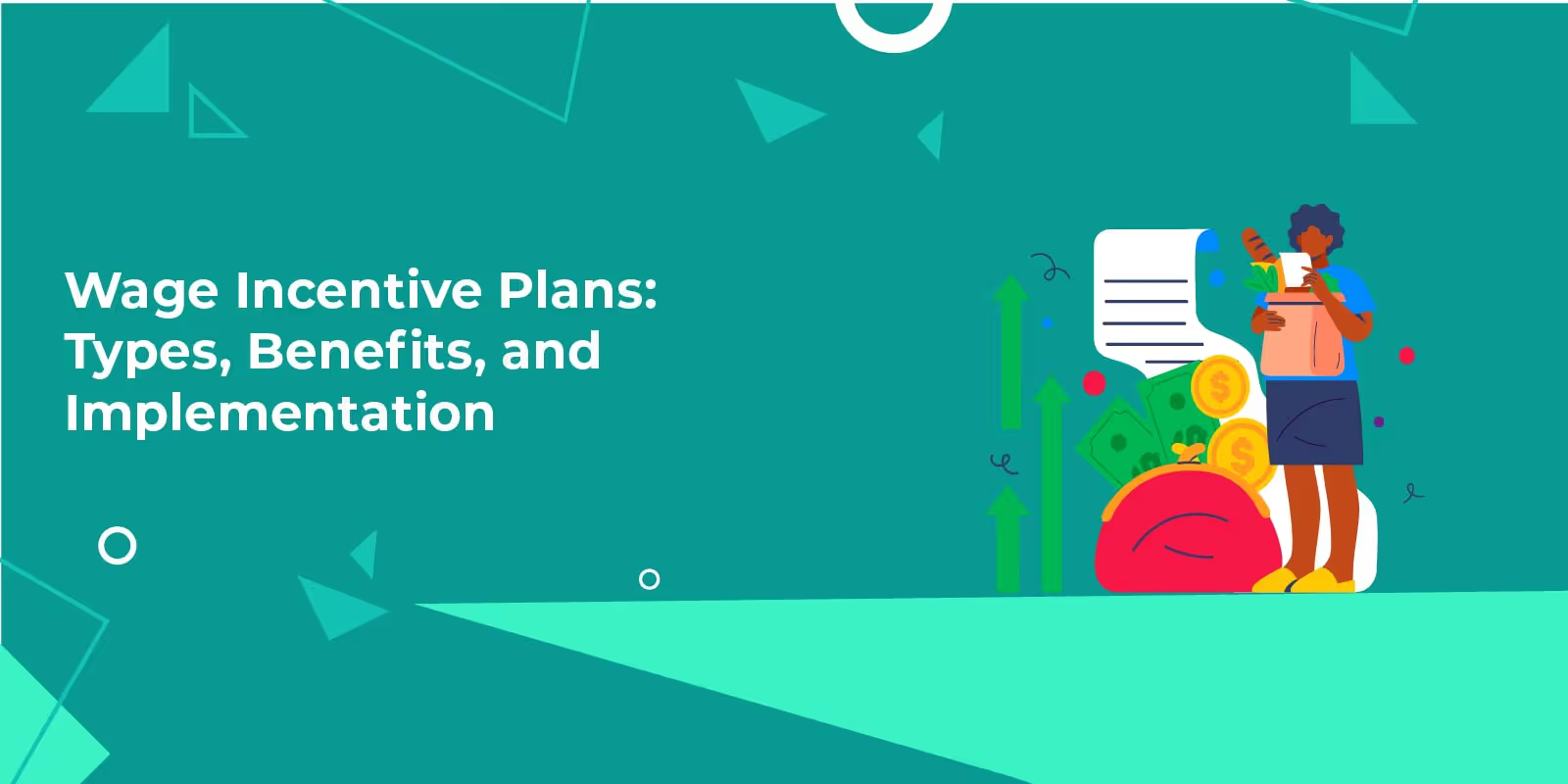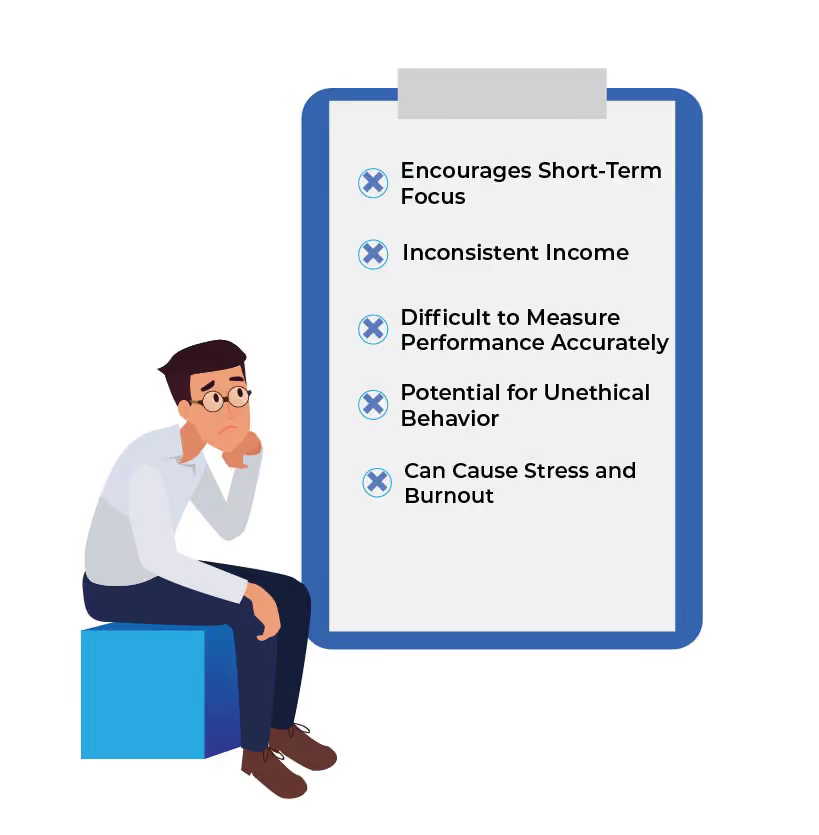
Blog
Wage Incentive Plans: Types, Benefits, and Best Practices
October 11, 2024


Key Insights
Wage Incentive Plans: Types, Benefits, and Implementation
Some of you may find this relatable. You've got a team full of potential, but they seem stuck in the slow lane. No matter how much you try to motivate them, they don’t hit top gear.
The solution might be simpler than you think: wage incentive plans, and strategies that tie an employee’s paycheck to their performance. It's important to understand that having the best employees isn’t enough on its own, you have to drive them too.
So before you hit the start, let’s break down what wage incentive plans really are, how they work, and why some can backfire big time if not handled carefully.
What are Wage Incentive Plans?
A wage incentive plan is a structured program designed to reward employees based on their performance. Unlike traditional hourly wages or salaries, where employees are paid a fixed amount regardless of output, incentive plans tie compensation to results.
According to a study by the Harvard Business Review, companies that use well-structured incentive programs see a 44% increase in employee performance. That’s worth paying attention to!
Types of Wage Incentive Plans

There are several types of wage incentive plans, each catering to different industries, roles, and objectives. Let's break down the most common ones:
1. Piece Rate System
This is one of the simplest forms of wage incentive plans. In a piece rate system, employees are paid based on the number of units they produce or tasks they complete. It's widely used in manufacturing or agriculture, where output is easy to quantify.
2. Commission-Based Plans
Popular in sales roles, commission-based plans reward employees based on a percentage of the sales they generate. If you've ever worked in retail, real estate, or insurance, you've likely encountered this system.
3. Bonus Schemes
Bonuses are typically one-time payments made to employees who achieve certain milestones, such as hitting a sales target or completing a project ahead of schedule. Unlike commissions, bonuses aren’t tied to ongoing performance but rather to specific achievements.
4. Profit Sharing
This plan distributes a portion of the company’s profits among employees. It’s a great way to foster a sense of ownership and alignment with the company’s long-term goals. The more profitable the company, the bigger the employees' payout.
Key Components of Effective Incentive Plans
You need the right parts to make it run smoothly. Let’s look at the key pieces that make it work:
1. Alignment with Company Goals
The key is to make sure the rewards drive actions that matter to the company. When employees’ goals match company goals, you’ll see real results.
2. Transparency and Fairness
Nobody should be guessing how to earn incentives. The rules need to be crystal clear, so everyone knows what they need to do to get rewarded. And fairness is non-negotiable.
3. Flexibility
A rigid plan will break. You need flexibility to adjust based on what’s working, what’s not, and how the business evolves.
Psychological Impact of Wage Incentives
Wages taps into the psychology of motivation. When done right, they can trigger a powerful sense of accomplishment and drive. According to Behavioral Economist Dan Ariely, "The act of being recognized and rewarded for efforts can motivate employees more than the reward itself." In short, the psychological boost can sometimes outweigh the financial gain.
On the flip side, poorly designed incentive plans can demoralize employees, especially if they feel the targets are unattainable. The key is to create a plan that feels achievable but still pushes employees to strive for more.
Customizing Wage Incentive Plans for Different Roles
One size does not fit all when it comes to wage incentive plans. A successful incentive structure takes into account the diversity of roles within the company. What works for a sales team might not work for your IT department. For example, while a sales team may thrive on commission, an engineering team might be better motivated by bonuses tied to project milestones or innovation.
Customization is crucial, so consider what motivates different departments and structure your incentive plans accordingly.
Disadvantages of Wage Incentive Plans

1. Encourages Short-Term Focus
Incentives often push employees to chase immediate results, like hitting monthly sales targets. This can make them focus on quick wins instead of long-term growth.
2. Inconsistent Income
Wage incentives can lead to unpredictable paychecks. Employees who rely on commissions or bonuses may feel financial pressure if they have a slow month.
3. Difficult to Measure Performance Accurately
Not all jobs have easy-to-define metrics for performance. How do you measure the effectiveness of someone in a support role or creative position?
4. Potential for Unethical Behavior
When employees are driven by incentives, some may cut corners or engage in unethical behavior just to hit their targets.
5. Can Cause Stress and Burnout
The pressure to consistently hit targets can lead to stress and burnout, especially if employees feel like they’re constantly chasing numbers.
Which Wage Incentive Plans are Highly Disadvantageous to Workers?
One of the worst offenders in this category is the piece rate system. When employees are paid solely by output, it can create a punishing work environment. Workers may push themselves to the limit, potentially harming their health, just to keep up with targets. Not to mention, fluctuations in demand can lead to huge pay inconsistencies.
Commission-based systems can also be problematic when the market hits a rough patch. Employees who once thrived might suddenly find themselves struggling to make ends meet, with little recourse.
Best Practices for Implementing Wage Incentive Plans

Here are a few quick tips to get your incentive plan rolling:
- Set Clear, Achievable Goals
You want to challenge your employees, not discourage them.
- Communicate Regularly
Don’t wait until the end of the quarter to check-in. Keep the conversation going so employees know how they’re doing.
- Be Open to Adjustments
If your plan isn’t working, tweak it. Sticking to a broken system just demoralizes your team.
Conclusion
At the end of the day, wage incentive plans are like any tool, they're great when used thoughtfully, but they need attention and care. It’s about creating something that also supports your team’s well-being and keeps them motivated for the long haul.
So, don't just focus on the numbers. Listen to your people, adjust when needed, and remember, an incentive plan that grows with your team will always pay off in the long run.
ReKennect : Stay ahead of the curve!
Subscribe to our bi-weekly newsletter packed with latest trends and insights on incentives.
Thank you! Your submission has been received!
Oops! Something went wrong while submitting the form.
Your data is in safe hands. Check out our Privacy policy for more info











